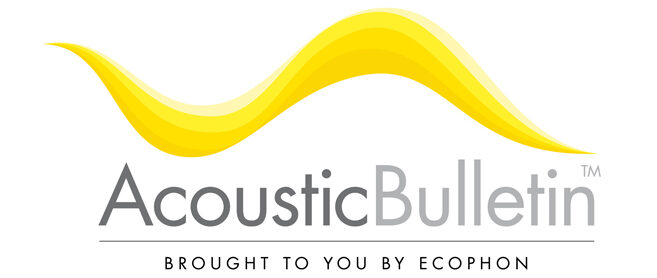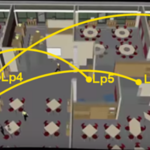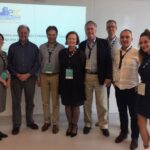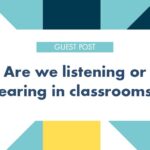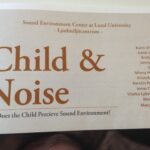Noise is not something we only hear but something we feel, making teachers stressed and disturbing students. However, what feels like unwanted noise for some over distance, may be wanted sounds for another locally. This can create a conflict, so it is important to be able to separate these in order to create a sound […]
Education
If Carlsberg built a University and hosted an education conference, they would discuss the value for good acoustics…..”probably!”
Well, not only does the Campus have good acoustics but it was host to the Annual European Education Research Association conference where acoustics was indeed a key part of one of the sessions…. The LEaRN team from the University of Melbourne organised an interesting session where the focus was industry and academia collaboration around educational […]
Transitions17, where education and architecture meet
Going beyond the traditional borders, be it education and pedagogy, architecture or geographical borders was the red thread of the Transitions symposium, the traveling ‘roadshow’ of the ILETC project when it came to London and Regent’s University for the first ever European edition (full program here). The world we live in is changing rapidly and […]
Are we listening or hearing in classrooms? The Indian perspective
There seems to be a universal agreement with the fact that proper acoustic treatment of a classroom will enhance comprehension abilities of its audience. This is more true with children as occupants compared with adults. To understand better, let’s first look at how our brain perceives sound. The adult brain takes all sounds we hear […]
I can’t hear myself think – lessons learned!
During a recent weeklong visit to Melbourne, my main purpose was to attend the Innovative Learning Environments and Teacher Change (ILETC) research project partners meeting and attend the ILETC education research Transitions Symposium “Transitions Inhabiting Innovative Learning Environments Symposium”. However, it was also an excellent opportunity to discuss and raise awareness about the importance of […]
Blending academia and industry to benefit children with hearing loss
Acoustics is a broad subject and as a researcher, it can be easy to forget to occasionally lift the head, straighten the back, breathe and take in the surroundings. The EU-funded iCARE project (Improving Children’s Auditory Rehabilitation) aims to promote inter-disciplinary research to benefit hard of hearing children and has been running for three years now. In order to […]
Transitions Symposium – Inhabiting Innovative Learning Environments
The first of a series of three worldwide symposiums took place in Melbourne earlier this month. The Melbourne ILETC Transitions Symposium – “Inhabiting Innovative Learning Environments Symposium” was organised by Innovative Learning Environments and Teacher Change (ILETC) research project and occurred the day after the ILETC project Annual Partners meeting. I attended and gained a lot […]
Interview with Acoustic Bulletin editor – Jiri Strnad
It’s time to meet a new Acoustic Bulletin Editor, and this time we go to the Czech Republic and have a chat with Jiri Strnad. Jiri has an identical twin brother, talks a million miles an hour, knows a lot about school acoustics, and if you’re ever lucky enough to meet him under more informal […]
Visiting a sound place to learn
The bold new twin-site, City of Glasgow College super campus, imbued with Glasgow’s energy and complexity, is impressive. A host of design awards for Michael Laird and Reiach and Hall Architects, supported by Arup Acoustics, is a testament to this. The £228m twin-site super campus itself constitutes a city community, a so-called “sticky” campus, […]
How does the Child perceive the Sound Environment? | CHILD & NOISE – INTERDISCIPLINARY SYMPOSIUM
Event: CHILD & NOISE – INTERDISCIPLINARY SYMPOSIUM 17 March 2017 The Sound Environment Centre at Lund University in Sweden Last Friday, Frans Mossberg and Eja Pedersen of the Sound Environment Centre, organised and moderated a thought-provoking and powerful interdisciplinary symposium with a wide range of speakers from around northern Europe, focused on how a child […]
